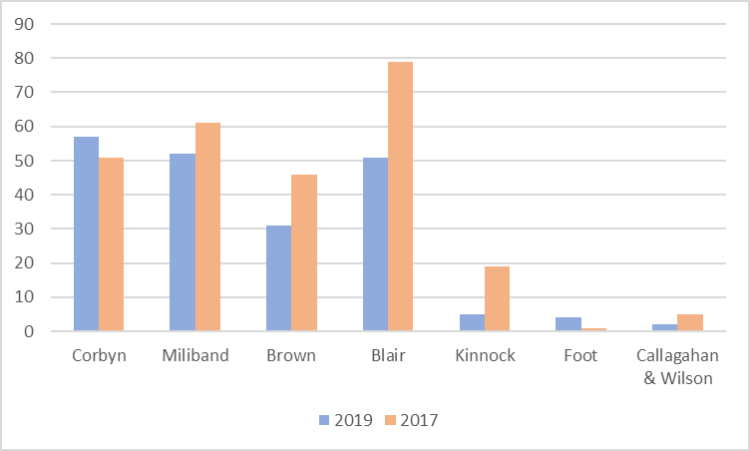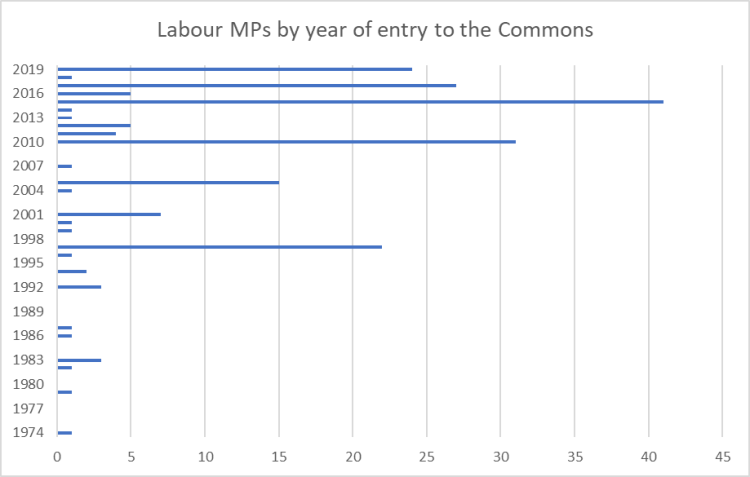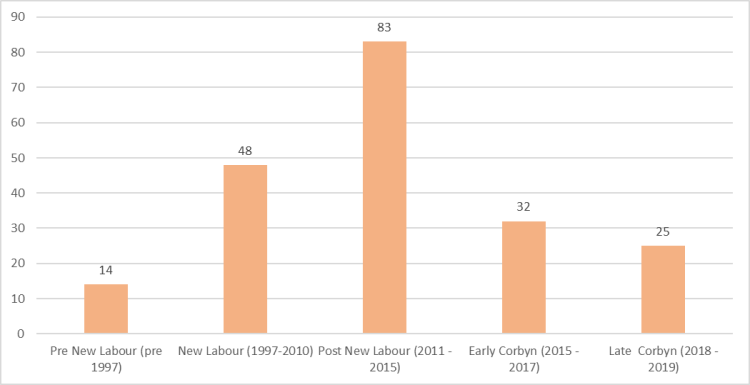Two years ago, I wrote an article called “Too Long” which analysed the longevity of service of the members of the PLP. I used three charts to show the age of service, which leader was dominant at the time of selection/election and also classifying them as belonging to a hegemonic faction. I have reproduced the charts below/overleaf and added one showing the changes. There is an argument that for the what I originally called the post Corbyn period, as in post his election, we should consider 2015-2017 as one epoch and 2018+ as another, but I haven’t. Clearly a number of MPs elected under Blair’s leadership have gone, but the average longevity of MPs service is still higher than 5 years, and hasn’t changed much and thus the PLP remains not necessarily representative of the massive growth in membership over the 2015/16 period, except for the trigger ballots that is, although four of them failed the trigger and yet were confirmed as candidates.
The distribution within each Parliament by Leader is shown below.

The difference between the 2019 & 2017 PLP can be seen,

The number of MPs by year of first election to the House of Commons,

The PLP dropped from 262 to 202 and yet there were 24 new entrants in 2019. 13 have served over 25 years, which is less than the 2017 number of 25. There are 51% of female MPs, an increase from 45%. The number of MPs in the PLP that entered as a result of a by-election fell to 28 which represent a slight nudge up from 13% to 14%. The mean and median average longevities rose which probably reflects the fact that seats lost had low longevity MPs and the smallish number of new entrants .

More Blairites exited the PLP, and as I said above, now we know the story, it would be best in terms of factionalism to consider 2015 to 2017 as controlled by Watson and McNicol with Corbyn only taking over a control on selections in 2018, and even then failed to use it. So I have reworked the chart above to show this.

The revised spreadsheet is here, it’s now in excel; there may be errors and I have classified the PLP as at the time of election and also included Lindsey Hoyle who stood as the speaker. (There may be errors, this was done quite quickly and the parliament page is now harder to scrape. Chart 2 for instance, suggests there are more MPs selected under Michael Foot in this parliament, this is clearly wrong. )
I reworked the entrants by hegemonic faction chart to split Corbyn’s leadership into two parts. I have slightly tidied up the words and set up the “Read More button”.